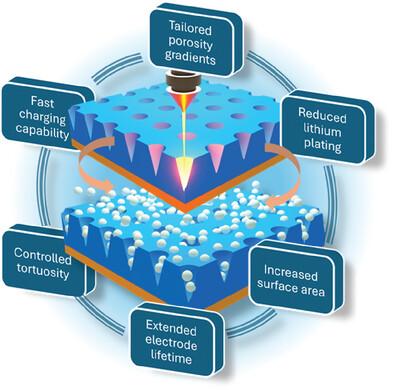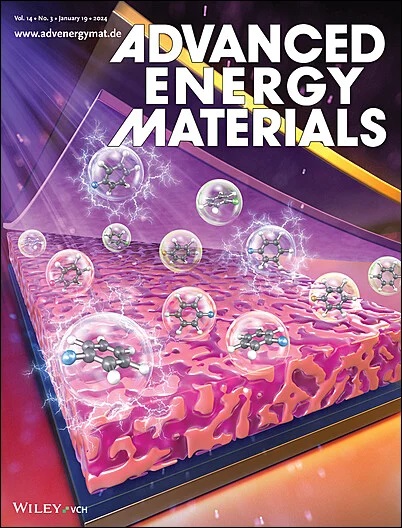Review on Recent Progress and Challenges in Laser-Structuring of Electrodes for Lithium-Ion Batteries
IF 24.4
1区 材料科学
Q1 CHEMISTRY, PHYSICAL
引用次数: 0
Abstract
The traditional lithium-ion battery (LIB) electrode has reached its limitations in terms of energy density and fast charging capabilities. To enable implementation in electric vehicles and other applications, 3D structuring is a method frequently proposed to allow for performance enhancement due to an increase in electrode surface area. Due to the decrease in lithium ion diffusion pathways, potential for application in thick electrodes exists, allowing further enhancement of energy density. Laser ablation is a promising manufacturing technique for the fabrication of 3D structured electrodes due to its ease of implementation in the existing electrode manufacturing process, as well as its flexibility and precision. This review details the main process parameters of the laser ablation process and their influence on the process efficiency and quality of generated structures. It further summarizes recent progress in finding the optimal electrode structure for both cathode and anode, and discusses the opinions on relative importance of cathode v. anode structuring. Lastly, current progress and challenges for the implementation in the battery manufacturing process are detailed, providing techniques for the upscaling and increase of belt speeds.

求助全文
约1分钟内获得全文
求助全文
来源期刊

Advanced Energy Materials
CHEMISTRY, PHYSICAL-ENERGY & FUELS
CiteScore
41.90
自引率
4.00%
发文量
889
审稿时长
1.4 months
期刊介绍:
Established in 2011, Advanced Energy Materials is an international, interdisciplinary, English-language journal that focuses on materials used in energy harvesting, conversion, and storage. It is regarded as a top-quality journal alongside Advanced Materials, Advanced Functional Materials, and Small.
With a 2022 Impact Factor of 27.8, Advanced Energy Materials is considered a prime source for the best energy-related research. The journal covers a wide range of topics in energy-related research, including organic and inorganic photovoltaics, batteries and supercapacitors, fuel cells, hydrogen generation and storage, thermoelectrics, water splitting and photocatalysis, solar fuels and thermosolar power, magnetocalorics, and piezoelectronics.
The readership of Advanced Energy Materials includes materials scientists, chemists, physicists, and engineers in both academia and industry. The journal is indexed in various databases and collections, such as Advanced Technologies & Aerospace Database, FIZ Karlsruhe, INSPEC (IET), Science Citation Index Expanded, Technology Collection, and Web of Science, among others.
 求助内容:
求助内容: 应助结果提醒方式:
应助结果提醒方式:


